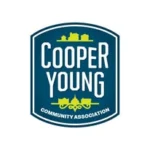In the 1970s, local preservationists and authors Peggy Jemison and Virginia Dunaway embarked on a project for the Metropolitan Interfaith Association (MIFA) to document the histories of eight historic Memphis neighborhoods, including Cooper-Young. Published in 1980, their work was the first real history of the area, which at the time was in a state of decay.
Thirty years later, with the neighborhood having undergone a dramatic transformation, writers Lisa Lumb and Jim Kovarik updated the earlier work for the book Cooper-Young: A Community at Works: A History, published by the Cooper-Young Community Association.
In the latest in a series of excerpts from the book, this month we explore the early days of commerce in Cooper-Young.
There were many homes, good transportation, and a school in Cooper-Young by 1910. Streets were being paved. It was natural that stores and shops would move in to service the neighborhood. There were three groceries when Mrs. C.O. Barbour was first married in 1909. There was Peacock’s on the corner of Blythe and Young, Wright’s on Cooper, and Quinn’s at Cooper and Young. Barbour’s husband worked for E.M. Quinn, who lived behind the store and was a prominent man in the community. Mr. Quinn sold out to Duke Bowers, an amazing pioneer in cash and carry grocery merchandising. Bowers at one time had a chain of 50 or more grocery stores in Memphis. A bulldog was his trademark over a sign that read: “Trade at Bowers’, and you won’t get bit.” Bowers Grocery stayed on the corner at 952 South Cooper until the chain was sold to Kroger.
Another genius in the grocery business saw the potential in Cooper-Young and in 1917 opened the fifth Piggly Wiggly in the city at 936 South Cooper. Clarence Saudners lived briefly in the neighborhood, so he was familiar with the market. There was a Montesi’s on Cooper near Central, and in the ’40s there was a very popular Big Star on Young operated by the friendly Hellum twins. “The only way I could tell them apart was one had a little wart on his face. That was Murl,” said J.W. Clark.
A drug store existed on the corner of Cooper and Young as early as 1910, when William F. Summers offered “Summers’ Little Liver Pills,” “Summers’ Cold Tablets,” and “Summers’ Witch Hazel and Almond Cream” to those who came to Summers’ Pharmacy at 2150 Yung. In 1913, Wright’s Grocery was sold to Henry Neely Kahn, who opened a drug store at 940 South Cooper. LaValle Moore took over the business, which became Moore’s Pharmacy, one of the best drug stores in the city. In 1916, Moore and his wife, Scotia Belote Moore, built the spacious two-story brick house at 2007 Young. There they lived with their daughter, Catherine Moore Freeburg, who was married in the home and sold it only after her mother’s death in 1968. Moore sold the drug store in 1923 to C.C. Rogers, who operated it as late as World II. It became Garner’s Drug Store and later Sanders’, which stayed there until 1974 when Mr. Sanders built an attractive brick building at 2183 Young.
Virgil Troutt and his brother opened a barber shop at 950 South Cooper in 1916. The Troutt brothers moved across the intersection to 2129 Young, where thy equipped a very modern barber shop. The later built a laundry and dry-cleaning business, doing much of the cleaning for the Second Army Headquarters stationed at the Fairgrounds during the World War II. Clark bought the barber shop and equipment in 1957. His shop stood for several years at the spot that is now part of Café Ole, serving the neighborhood as a good place to gather and talk and look at Clark’s pictures and clippings.
Bemis Atkins’ Barber Shop and Beauty Salon at 966 South Cooper (the Beauty Shop restaurant) was also popular. The fun-loving Atkins would tell people that he first arrived in Cooper-Young at 8 a.m. in 1931 with 35-cents in his pocket. He stayed to build a remarkable business and give the neighborhood a major success story. When he started working during the Depression, he cut hair and gave shampoo and sets for 40-cents each. Many times he’d accept a chicken or a bag of beans when his customers had no cash. His wealth, however, came from his Pronto Pup business, which he started in 1946. From a modest fair stand that he took over from a friend, he grew to a three-state franchise that. Though originally started in Portland, Oregon, the Pronto Pup has become a beloved local institution at local fairs and festivals thanks to the goodwill of Atkins and his descendants, who still operate the business today, and the biggest day of their year is the Cooper-Young Festival.



